The Ramayana is an ancient Sanskrit epic attributed to the poet Valmiki and an important part of the Hindu canon. One of the most important literary works of ancient India, the Ramayana consists of 7 chapters (Kanda), and narrates the story of Rama’s wife Sita being abducted by Ravana, the demon (Rakshasa) king of Lanka.
According to the Ramayana, King Ravana brought Sita Devi from India in a “Pushpaka Vimana” which is widely known in Sri Lanka as the “Dandu Monara Yanthranaya,” or Large Peacock Machine in Sinhala.
The Ramayana has fascinated many generations, and had a profound impact on art and culture in the Indian subcontinent and Southeast Asia.
For over thousands of years, the Ramayana, epic of Asia, has had an unshakeable hold on the beliefs of vast multitudes of Asia’s teeming millions. As diverse span of humanity as Kashmiri pandits and Cambodian fishermen, it is the universal heritage of all humanity.
A rich legacy of sites and temples in the country where the most significant events of this epic took place – Lankapura – Sri Lanka. Though some people do not believe that the present Sri Lanka is the one mentioned in the Ramayana, when we investigate the area, there is still much convincing tradition therein and many sites identified with the Ramayana.
Sri Lanka is the proud custodian of more than 50 Ramayana sites from the place of Sita Devi’s captivity to the battlefields where vast armies clashed, to the groves of exotic herbs dropped by Hanuman, to the ultimate theater of war where Lord Rama slew Ravana, the ten-headed demon-king.
People living in the areas where great events took place remember to this day the connection of their soil to the great epic. An oath taken at the spot where Sita Devi undertook “Agni Pariksha” is still considered valid in village courts or grama sabhas. The color of the soil of the ancient battlefield is still red today, and is still surrounded by lighter colored earth. One of the airports of Ravana, torched by Hanuman when he came looking for Sita Devi, still has a scorched-earth look. A patch of darker soil surrounded by brown earth. Exotic alpine Himalayan species are found suddenly amidst tropical Sri Lankan vegetation, the legacy of Hanuman’s heroic voyage carrying a mountain with life-restoring herbs.
Incredibly, the names of places have come down to modern times unchanged. Though great social, cultural and religious changes have taken place in Sri Lanka since.
Sri Lanka shares a special bond with India geographically, historically, culturally and spiritually. The Ramayana begins with Ayodhya in India and climaxes at Lankapura.
People in Sri Lanka through generations believed that king Ravana ruled this country. There are many sites in Sri Lanka which are connected to the Ramayana. Below is a list of places which have been identified as connected to the Ramayana and listed in sequential order.
The Kidnapping of Sita by Ravana
Ravana was the king of Lanka and another 9 kingdoms. He was known as Dasis (or Dasa Shirsha) meaning 10 heads, because he had ten crowns, one each for his ten kingdoms.
His sister Surpanakha went to Jambudweepa for some business. Surpanakha chanced upon Rama at his hermitage and became enamored with the handsome prince. Rama being faithful to his wife, Sita, did not respond and asked Surpanakha to approach Lakshmana who was unmarried. Surpanakha, who felt humiliated by this, tried to attack Sita in anger saying Sita was the cause of the men’s contempt for her. Lakshmana then intervened and cut off Surpanakha’s nose.
Surpanakha, terrified and in pain, flew at once to Lanka to seek the protection of Ravana. When Ravana asked his sister for the cause, Surpanakha said that she had seen Sita, a lady of incomparable beauty, and wanted to bring her for Ravana. Ravana resolved to take revenge for the insult his sister had suffered, as well as to get lovely Sita for him self, and set out to abduct Sita and bring her to Lanka.
Ravana, using a golden deer as a decoy, visited Sita when she was alone. In the guise of an old sage, he abducted and brought her to Weragantota in Lanka in his plane, the Pushpaka vimana.
Weragantota means the “place of aircraft landing” in Sinhala. This is the first place Sita Devi was brought to Lankapura (capita city of king Ravana). These jungles are the place where the city of Lankapura once stood. The city had a beautiful palace for Queen Mandothari surrounded by waterfalls, streams and varieties of flora and fauna. Sita Devi was kept at Queen Mandothari’s palace at Lankapura. The place Sita was held captive is called Sita Kotuwa, which means “Sita’s Fort” in Sinhala. It is believed Ravana had an aircraft repair center at Gurulupotha close to Sita Kotuwa. Sita devi was kept in queen Mandothari’s palace until she was moved to Sita Kotuwa and then on to Ashoka Vatika. The remains that are found here are the remnants of later civilizations. In Valmiki’s depiction, King Ravana’s vimana resembled a huge peacock. The vimana in Sinhala language means “Dhandu Monara” which is known as “flying peacock,” and hence the name Gurulupotha, which means “parts of birds” in Sinhala. This is also called Gavagala.
Sita Taken from Sita Kotuwa to Ashok Vatika (also known as Ashoka / Asoka Vanam)
Ravana moved Sita from Sita Kotuwa to Ashok Vatika the salubrious garden in the mountains. The route too was said to be spectacularly beautiful, as Ravana wanted to show Sita the beauty of his kingdom. The barren land atop the mountain range is believed to be the route in which King Ravana took Sita devi from his capital city Lankapura to Ashoka Vatika, which was a paradise on earth. The Chariot Path atop the mountain range is still visible. Till date no vegetation grows on this passage except grass. King Ravana is believed to have taken this passage on top of these hills to show Sita devi the beauty of his kingdom.
Ashok Vatika is the garden where Ravana held Sita captive. This is in the area of Sita Eliya, close to the city of Nuwara Eliya. The stream that runs from the hill catered to the needs of Sita devi during her stay at Ashok Vatika. She is said to have bathed in this stream. The Hakgala Gardens located at the base of the Hakgala Rock forms part of the famed Ashok Vatika. The Sita Pokuna is a barren area atop the Hakgala Rock Jungle where Sita was kept captive. The Sita Amman Temple is located at this spot. It is interesting to note that foot prints akin to Hanuman’s are found by this river and some are of small size and some are of large size, which tells us of the immense powers of Hanuman transforming himself into any size.
About a century ago three images were discovered in the stream, one of which was that of Sita. It is believed that the deities have been worshipped at this spot for centuries. Now there is temple for Lord Rama, Sitadevi, Lakshmana, and Hanuman by the side of this stream.
The summit of the mountain next to the mountain range overlooking Frotoft Estate in Pussallawa is the place where Hanuman first set his foot on mainland Lanka. This mountain known as Pawala Malai is visible from this mountain range. These hills stand tall in-between King Ravana’s capital city and Ashoka Vatika.
The Sita tear pond is found en route by the chariot route, and is believed to have been formed by the tears of Sita devi. It has not dried up since, even during severe droughts when the adjoining rivers dry up. Visitors could also see the famed Sita Flowers which are endemic to this area. In this area there are many large trees whose bright red blooms add color to the scenery. These flowers are called Sita flowers. The peculiarity of these flowers is the configuration of the petal’s, stamen and pistils, which resemble a human figure carrying a bow, and is said to represent Lord Rama. These flowers are unique only to this area in the whole of Sri Lanka.
Search for Sita
Sugriva, ruler of the Vanara or special monkey kingdom, ordered his monkey armies to search for Sita in all four corners of the earth. Hanuman, Angada, Jambavan and other heroes traveled southwards. Hanuman was the only one strong enough to cross the ocean to reach Lanka. Whilst crossing the ocean, Hanuman was tested by Surasa Devi, the Naga maiden en-route to Lanka. This place is now called Nagadipa.
Hanuman meets Sita at Ashok Vatika and is Captured by Ravana
Hanuman after meeting Sita at Ashok Vatika, decided to test the strength of King Ravana and his army of Rakshasas. He invited battle by uprooting trees and destroying the garden. Upon being captured by the Rakshasa guards, Hanuman was brought in the presence of Ravana. As a punishment, Hanuman’s tail was set on fire. Hanuman in turn set fire to the houses in the city. Ussangoda is one such torched area.
On the way back to India Hanuman rested at Mani Kattuthar. The hilltop where Hanuman is believed to have rested after meeting Sita devi is known as Mani Kattuthar. This is a rock in the Labookelle estate. Hanuman met Sita devi and on his way to announce this happy information to Lord Rama, rested on this hilltop. Today an open temple with statues of Lord Rama, Sita devi, Lakshmana, and Hanuman stands on top of it. Locals visit the temple often.
Near by is the village of Kondagala, known as Kondakalai in Tamil, where Sita is said to have deranged her hair whilst passing the place. Kondakalai (Kondagala), like many other cities and villages in Sri Lanka, also derives its name from the Ramayana. When King Ravana took Sita devi in a chariot to Ashoka Vatika, her hairs got deranged because of the speed of the chariot. “Konda kalai” in Tamil means “deranging of hair.” Till date the villagers live with the legacy of this event.
The village also contains Sita Gooli which are rice balls offered by Ravana to Sita; which she refused and threw away. When King Ravana carried Sita devi on his chariot to Ashoka Vatika, he provided her with vitaminized rice balls for refreshment. But Sita devi who did not want to consume anything provided by King Ravana, scattered the rice balls all over the place during her journey, and they are found till date along the chariot track. The local people call these rice balls Sita Gooli and they prescribe them for their children as a cure for stomach disorders and headaches. The farmers too keep them in their cash boxes or grain pots for prosperity. It is claimed that carbon dated testing has been done in Tokyo and Delhi on these rice balls and ascertained them to be more than five thousand years old.
Sita is Hidden after the visit of Hanuman
Upon hearing Hanuman’s threat and seeing his capabilities, King Ravana decided to hide Sita at various secret locations as a precautionary measure. Ravanagoda, which means Ravana’s place in the Kotmale area, is one such complex of tunnels and caves.
Istripura is another ingenious network of paths which are interconnected with all major areas of king Ravana’s city. Istripura means “Area of Women” in Sinhala. This refers to the retinue of ladies Ravana made available to look after Sita.
Konda Kattu Gala refers to the many intruding tunnels and caves in this area. This seems to be a part of a great ingenious network of paths, which is interconnected to all the major areas of King Ravana’s city. Sita devi took bath in this very stream and had dried her hair sitting on a rock and put clips to her hair, hence this rock is known as Konda Kattu Gala. This is situated in the Welimada Area.
Tunnel Network
This tunnel network proves beyond doubt the architectural brilliance of King Ravana. These tunnels served as a quick means of transport through the hills and also as a secret passage and networked all the important cities, airports and dairy farms. A close look at these tunnels indicates that they are man-made and not natural formations. The Buddhist shrine at Kalutara was once where King Ravana’s palace and a tunnel existed. Additional existing tunnel mouths are situated at Welimada, Ravana cave at Bandarawela, Senapitiya at Halagala, Ramboda, Labookelle, Wariyapola/Matale, and Sitakotuwa/Hasalaka, along with many more tunnels. Some have also said that Ravana had a tunnel that went all the way to South America, in which he had stored much of his gold and treasury.
Preparing for Battle
Gayathri Peedum is believed to be the place from where King Ravana’s son Meghanath propitiated Lord Shiva with penance and pujas, and in turn was granted super natural powers by Lord Shiva prior to the battle. Neelawari is located in the North of the country in the Jaffna peninsula and is where Lord Rama shot an arrow to the ground to obtain water for his army upon arriving at Lanka.
Dondra, Seenigama & Hikkaduwa are places in the South of Lanka where Sugriva (king of Vanaras, the special species of monkeys) prepared for his onslaught on King Ravana’s forces from the Southern flank.
War Breaks Out
During the height of the battle Indrajit, elder son of Ravana beheaded a lookalike of Sita Devi in front of Hanuman to break his spirit. This place is known as Sitawaka in the Avissawella area.
Yudhaganawa, meaning battlefield in Sinhala, is a place in Wasgamuwa where the major battles took place.
Upon being hit by Indrajit’s Brahmastra, both Rama, Lakshmana and the monkey army lay unconscious on the battle field. To cure them, Jambavan the veteran monkey instructed Hanuman to go to Sanjeevani Parvatha, the hill of herbs between Rishhaba and Kilasa peaks in the Himalayas and bring the necessary medicinal herbs. As he could not identify which herbs to select, Hanuman uprooted the entire peak with all the herbs growing there from the mountain and returned to Lanka.
Parts of the hill fell on five places in Sri Lanka; namely Rumassala in Galle, Dolukanda in Hiripitiya, Ritigala close to Habarana on the Habarana Anuradhapura road, Talladi in Mannar, and Katchchathivu in the north.
Lord Karthikaya Subramaniyam was requested to go to battle by Lord Indra to protect Lord Rama from king Ravana’s Brahmastra. This was at Kataragama, which is now a very popular place for worship among Sri Lankans.
The Fall of Ravana
Dunuvila lake is a place from which Lord Rama fired the Brahmastra arrow at king Ravana who was directing the war from Laggala. It is here that King Ravana was killed by Lord Rama’s brahmastharam. The top of Laggala is flat and is believed to have been affected by the power of the brahmastharam. “Dhunu” means “arrow” and “Vila” means “Lake,” so it gets its name from this pastime.
The name Laggala is derived from the Sinhala term “Elakke Gala“, which means Target Rock. Laggala served as a sentry point to observe Lord Rama’s army. The cartels behind the Dunuvila lake are called Laggala. It was from this rock the first glimpse of Lord Rama’s army was sighted and informed to King Ravana. This hill is geographically the highest part of the northern region of King Ravana’s city and on a clear day the north east side that is Thiru Koneshwaran and north west side that is Talai Mannar can be seen even today. King Ravana is believed to have done meditation on this rock and prayed to Lord Shiva at Thiru Koneshwaran from this point.
After Ravana’s death, his body was kept at Yahangala, meaning “Bed Rock” in Sinhala. This is situated along the Mahiyanganaya – Wasgamuwa road. King Ravana’s body was kept upon this rock so his countrymen could pay their last respects to their dear departed king. Geographically this rock is visible from miles away on its 3 sides.
After the War
Sita met Rama after the war, and Divurumpola is the place she under went the “Agni” test of fire where she proved her innocence and purity to Rama. Divurumpola means the “Place of Oath” in Sinhala. She came out unscathed and proved her innocence and purity.
The message of Rama’s victory over Ravana was sent to Sita. After a bath and adorned with jewels she was taken on a palanquin before Rama. Meeting her husband after such a long time she was overcome with emotion, but Rama seemed lost in thought. At length he spoke, “I have killed my enemy. I have done my duty as a true king. But you have lived for a year in the enemy’s abode. It is not proper I take you back now.”
Sita was shocked. “You have broken my heart” she said, “only the uncultured speak like this. Have you forgotten the noble family I come from? Is it my fault Ravana carried me off by force? All the time, my mind, my heart, and soul were fixed on you alone, my lord!”
She turned to Lakshmana and said with tears streaming from her eyes, “prepare for me a fire. That is the only remedy for this sorrow of mine.” Lakshmana, in suppressed anger, looked at Rama’s face, but there was no softening, he lighted a big fire. Sita reverently went round her husband and approached the blazing fire. Joining her palms in salutation, she said, “if I am pure, O fire, protect me.” With these words she jumped into the flames. Then arose from out of the flames, Agni the fire-god, whom she had invoked. He lifted Sita from the flames unharmed, and presented her to Rama. “Don’t I know that she is spotless and pure at heart?” cried Rama, standing up to receive her. “It’s for the sake of the world that I made her go through this ordeal of fire, so that the truth may be known to all.”
The spot was initially fenced and walled to protect it from the surrounding wilderness. Then a sapling of the Anuradhapura bodhi tree (one of the 30 original saplings) was planted as a mark of respect for the place. A small pagoda was built subsequently under the Bodhi tree. The temple depicts paintings of the Ramayana epic.
Today the temple is revered for the oath taken by Sita devi and even the legal system permits and accepts the swearing done at this temple while settling disputes between parties.
Vantharamulai is a place that Lord Rama, Sita Devi, Lakshmana, and Hanuman rested after the turmoil of the war. Amaranthakali is believed to be the place where they had the first meal after the war.
When returning to India in one of King Ravana’s vimanas, Rama felt he was followed by a Brahmahasti Dhosham, a malevolent black shadow or dark cloud capable of taking His life, as He had killed Ravana, a Brahmin. When the vimana was passing over Munneswaram, He felt the vimana vibrating, and at Muneswaram realized the “Brahmaasthi Dosham” was not following him at this particular point. So Rama felt safe from the “Brahmahasti Dhosham” at Munneswaram. So Lord Rama stopped the vimana at this juncture and asked Lord Shiva for a remedy. This is the place where Lord Rama prayed to Lord Shiva and where Shiva blessed Lord Rama and advised installing and praying to four lingams to get rid of the Dhosham. The first Lingam was installed at Manavari about 5 Km from here, near the banks of Deduru Oya. This was followed by the lingams at Thiru Koheneshwaram, Thiru Ketheshwaram, and Rameshwaram in India.
It is believed that Munneswaram predates the Ramayana and a temple dedicated to Lord Shiva was located here. Munneswaram means the first temple for Shiva (Munnu + Easwaran). A Shiva Lingam was already here when lord Rama visited the place.
After King Ravana’s death, Ravana’s brother Vibhishana was coroneted as a king of Lanka by Lakshmana at Kelaniya. Kelaniya is the closest site to Colombo connected to the Ramayana.
There exists a Buddhist temple, the Kelaniya Buddhist Temple and shrine for King Vibishana. There are murals enshrined outside the Buddhist temple depicting the crowning of Vibishana. Vibishana is considered one of the four guardian deities of Sri Lanka, and temples for Vibishana are found throughout Sri Lanka. A painting of King Vibishana also adorns the new Parliament of Sri Lanka. In fact, there are no temples dedicated for Ravana, but many exist for Vibishana; this goes to prove that his stand towards Vedic Dharma & justice made people to revere him as a god in Sri Lanka.
The Kelani River is mentioned in the Valmiki Ramayana and Vibishana’s palace was said to be on the banks of this river. The reason Lakshmana crowned Vibishana was because Lord Rama had to return to India to continue his self-exile of 14 years to honor the commitment to His father, King Dasarath of Ayodhya. King Vibishana was considered a fair king, as he supported Rama against his own brother’s injustice. Many devotees that visit King Vibishana’s shrine pray to him asking his intervention to a fair recourse to their problems.
Other Places of Interests Connected to the Ramayana in Sri Lanka
1. Kanniya – The place where King Ravana carried out the last rites for his mother.
2. Gavagala or Ghoushala – King Ravana’s dairy farm.
3. Airports of King Ravana:
Thotupolakanda (means “Mountain Port” in Sinhala) at Horton plains
Weragantota (means “Place of Aircraft” landing in Sinhala) in Mahiyangana
Ussangoda (means “Area of Lift” in Sinhala) in the Southern coast
Wariapola (means “Aircraft Port” in Sinhala) in Matale and Kurunagala.
4. Neelawari — A place where Lord Rama aimed an arrow to obtain water.
5. Panchamukha Anjanaya Temple, Kalubowila – This is the first Anjaneyar Temple in Sri Lanka and also the only Panchamukha (five faced) Anjaneyar Temple in Sri Lanka. It is the only temple in the world to have a chariot for Ajanyar. The chariot festival is held annually at end of December to the beginning of January. Hanuman’s mother is Anjan. Hanuman is known as Anjan + Aiyar = Anjaneyar in South India (Hamuman in North India).
6. Rama Temple at Rattota — One of the few Rama’s temple in Sri Lanka.
7. Maha Ravanagoda / Kuda Ravanagoda — Ravana’s places in the south.
8. Veedurupola – Buddhist temple dedicated to research on Ramayana.
9. Sri Baktha Hanuman Temple — on the hills of Ramboda is a place where Hanuman was searching for Sita Devi. The name is also associated with Rama’s army. Rampadai means Rama’s force in Tamil. The Chinmaya mission of Sri Lanka built a temple with Hanuman as the presiding deity. On every full moon day special pujas are conducted and witnessed by thousands of devotees.
10. Manavari Temple is the first lingam installed and prayed to Lord Rama and till date this lingam is called as Ramalinga Shivan. Rameshwaram is the only other lingam in the world named after Lord Rama.
11. Rama Temple – Rattota. There are a few Rama temples in Sri Lanka, this is one of them. This is the only Rama temple in this area. This is a privately managed temple. This is one of the most scenic routes to travel from Matale to visit Laggala (on the northern side of Knuckles).
12. Kataragama Temple – This is the temple of Lord Karthikeya Subramaniam at Kataragama. Lord Karthikeya was requested to go to the battlefield by Lord Indra on the last day of war. This was done to protect Lord Rama from the wrath of the Brahmastra aimed by King Ravana which otherwise would have weakened Lord Rama. The benefit was that the most powerful brahmasthra weapon aimed at Lord Rama for the second time was rendered useless by the presence of Lord Karthikeya.
13. Ussangoda – According to the Ramayana, after meeting Sita devi, Hanuman dedicated to test the strength of the mighty King Ravana and his army of Rakshasas. In the events that unfolded, Hanuman’s tail was set on fire by the Rakshasas, who in turn went on to torch some parts of King Ravana’s empire. Ussangoda is one of the torched areas, which is said to have been an airport used by King Ravana.
14. Vishnu Devala, Dondra – These are the places from where King Sugriva of the Vanara’s started his onslaught on King Ravana’s force.
15. Ravana Goda – This is a place where Sita devi stayed during her transit. This area is also linked with tunnels and caves, which runs through to other parts of King Ravana’s kingdom. This is situated in the Kotmala area opposite to Ramboda rock. The main cave entrance was closed by an earth-slip in 1947. Locals believe this part of the complex was used as a prison by Ravana. The cave complex has not been fully explored.
16. Ravana’s mummy – An additional site connected to local belief, but yet to be discovered is the place where locals believe Ravana’s mummified body is hidden within the mountain range of Harasbatha, Ragala and Walapane.
References




 By Yadubara das
By Yadubara das












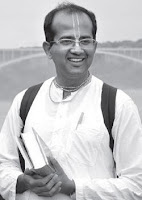

 Utthana Ekadasi
Utthana Ekadasi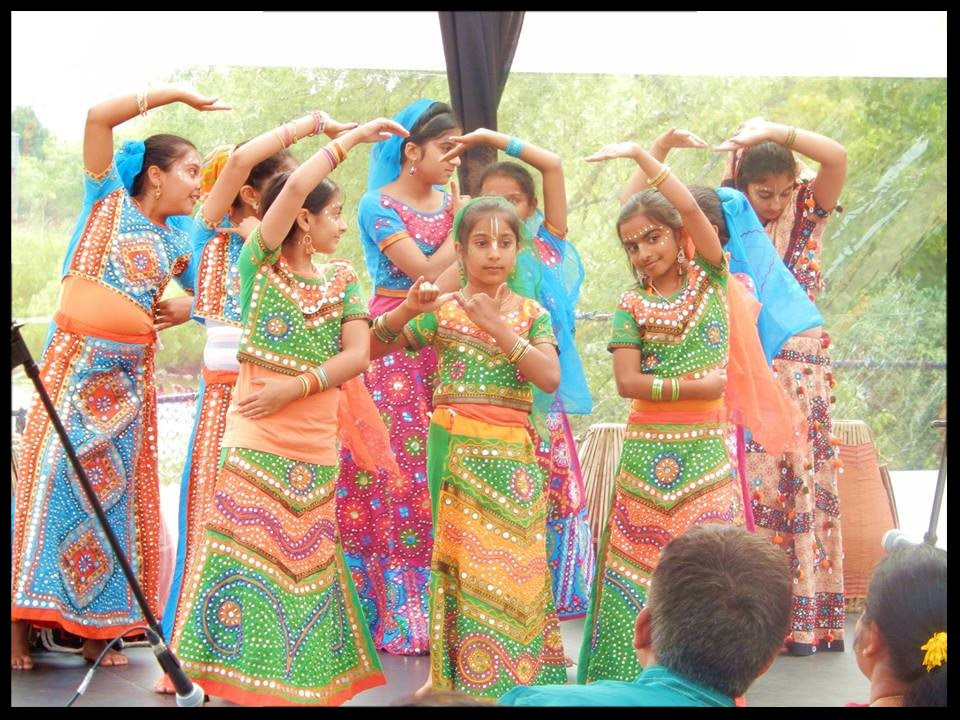

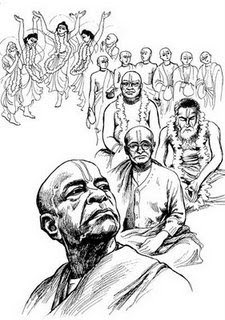

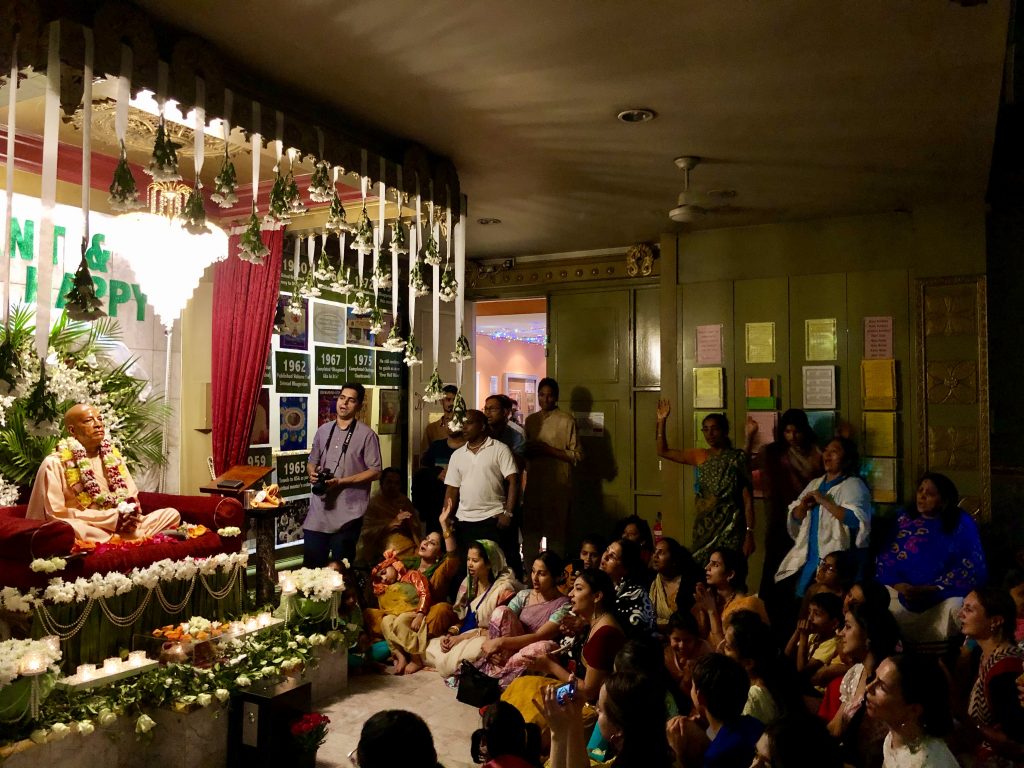
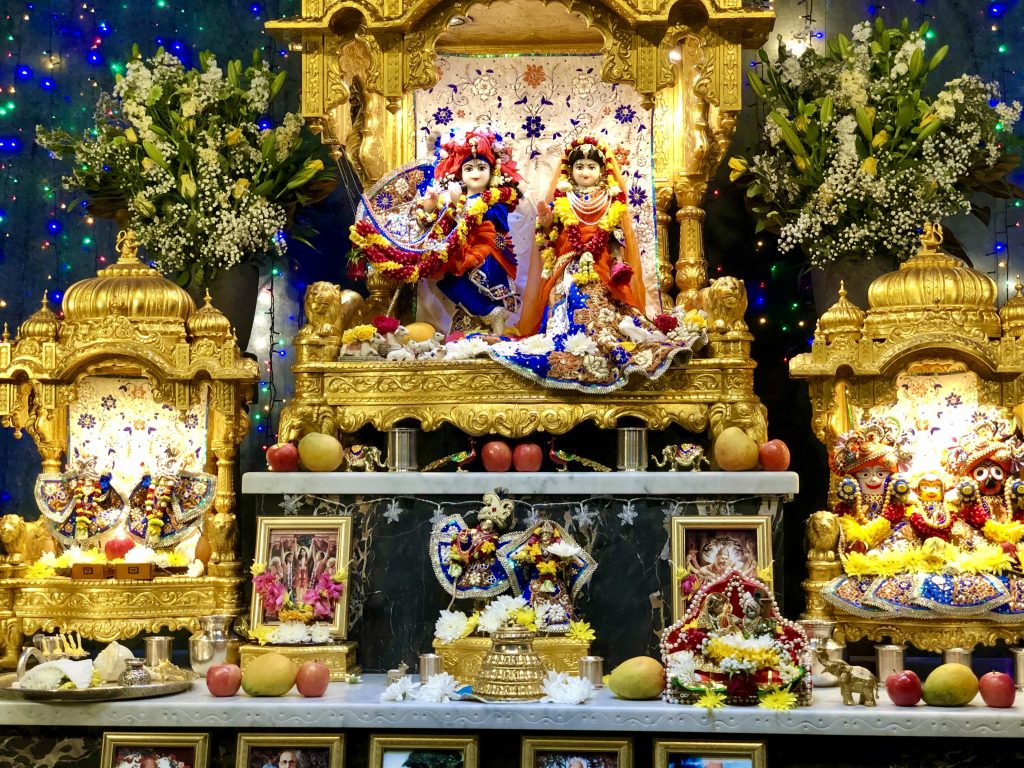









 By Gauranga Darshan Das
By Gauranga Darshan Das












